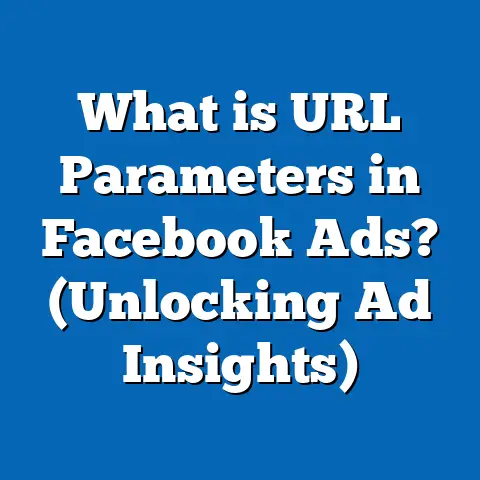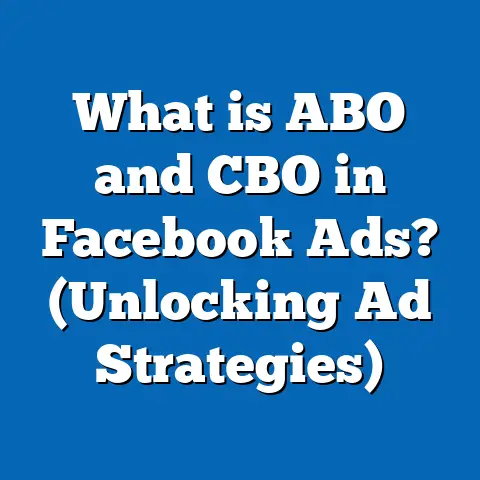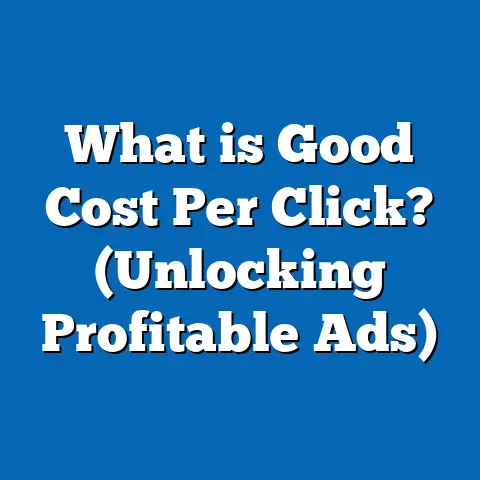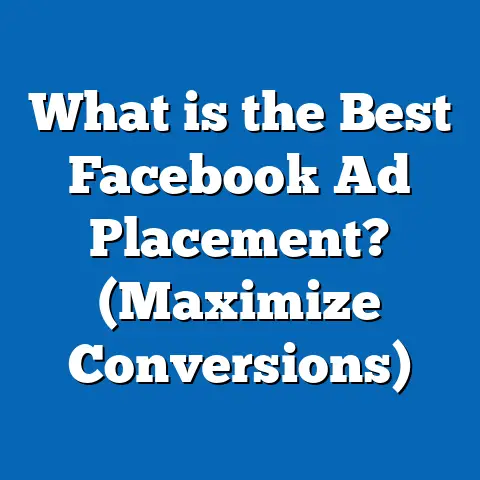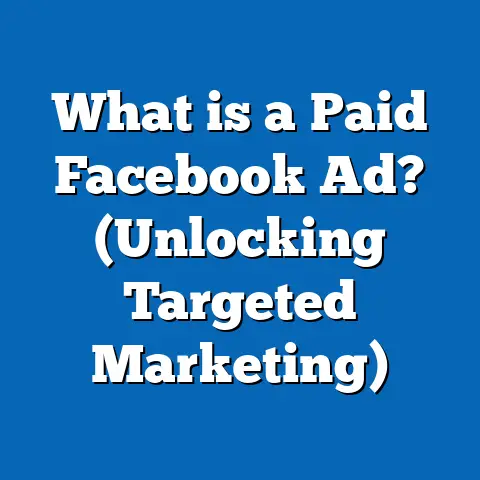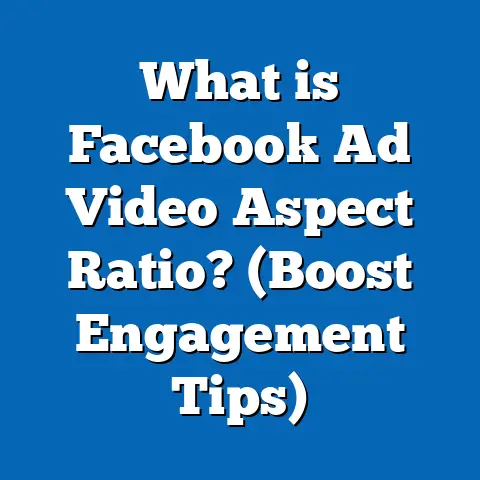What is the Best: Web Ads or Mobile & Facebook Ads? (Find Out!)
What is the Best: Web Ads or Mobile & Facebook Ads? (Find Out!)
Introduction: Why This Question Matters More Than Ever
In today’s digital-first world, businesses face an overwhelming number of options when it comes to advertising. The rapid evolution of technology and shifting consumer behaviors have made the choice between web ads and mobile & Facebook ads a critical decision for marketing professionals and business owners alike. This is not merely a preference between platforms but a strategic choice that can make or break the effectiveness of your campaigns.
Web ads traditionally dominated the digital advertising landscape, focusing on desktop users through search engines and website placements. However, mobile devices have surged ahead, reshaping how people interact online. And within mobile advertising, Facebook stands out as a powerhouse platform thanks to its unparalleled user base and sophisticated targeting tools.
Understanding the Foundations: What Are Web Ads and Mobile & Facebook Ads?
Web Ads: Definition and Scope
Web ads typically appear when users browse the internet on desktops and laptops. These ads can take various forms:
- Display Ads: Banners, skyscrapers, rectangles placed on websites.
- Search Ads: Text ads shown above or beside search engine results.
- Video Ads: Pre-roll, mid-roll, or post-roll ads on websites.
- Native Ads: Ads that blend seamlessly with website content.
- Pop-ups/Interstitials: Full-page ads that appear between content pages.
Platforms: Google Display Network (GDN), Bing Ads, programmatic platforms like The Trade Desk, direct buys on premium websites.
Audience: Desktop users who may be in focused work mode or in-depth research phases.
Mobile & Facebook Ads: Definition and Scope
Mobile ads encompass all advertising delivered through smartphones and tablets. Facebook ads are a significant subset, leveraging the social media giant’s ecosystem.
- Formats: Image ads, video ads, carousel ads, collection ads, stories, reels.
- Platforms: Facebook (Meta), Instagram, Messenger, Audience Network (in-app mobile ads).
- Audience: Mobile-first users engaging in social media, apps, and mobile browsing.
Facebook’s advanced targeting includes demographic data, interests, behaviors, location, device type, and even offline activity.
The Current Digital Advertising Landscape: Data & Trends
Internet Usage Breakdown: Desktop vs Mobile
In 2024, mobile internet traffic accounts for over 60% of total internet usage globally. Desktop usage has declined but remains significant in certain sectors like B2B and professional services.
- Mobile devices generate 70%-80% of social media traffic.
- Facebook alone has over 3 billion active monthly users, with 98% accessing via mobile.
Advertising Spend Trends
| Channel | 2022 Spend (Billion USD) | 2024 Projected Spend (Billion USD) | Growth Rate (%) |
|---|---|---|---|
| Desktop Web Ads | 120 | 130 | +8.3 |
| Mobile Ads | 200 | 280 | +40 |
| Facebook & Instagram Ads | 100 | 130 | +30 |
Source: eMarketer, 2024
Mobile and Facebook ad spending is growing rapidly due to higher engagement rates and better targeting capabilities.
Why Web Ads Still Matter: Key Advantages
1. Larger Screen Size Enables Richer Content
Desktop screens offer much more room for detailed visuals, longer text explanations, interactive content like forms or demos—which are valuable for complex products or services.
2. Higher Conversion Rates for Certain Demographics
Users browsing on desktops tend to be in a more deliberate mindset. For example, B2B prospects researching enterprise software or finance products convert better on desktop due to easier multi-tasking and deeper content consumption.
3. Superior Search Intent Targeting
Google Search Ads on desktop allow advertisers to reach users actively searching for specific keywords with high purchase intent. This efficiency often leads to higher ROI in sectors like finance, travel booking, and software.
4. Advanced Tracking and Customization
Desktop environments support more complex tracking pixels and scripts without compromising site speed or user experience. This makes it easier to run multi-step funnels and retarget users effectively.
Why Mobile & Facebook Ads Dominate Now: Core Benefits
1. Massive Reach & Daily Engagement
Mobile devices have become an extension of users’ lives. People spend an average of over 4 hours daily on their phones globally. Facebook’s apps (Facebook, Instagram) capture much of this time with billions of active users.
2. Precision Targeting with Rich Data Sets
Facebook’s vast data ecosystem enables advertisers to target audiences by demographics, behaviors, interests, life events, and even custom audiences from CRM data. This reduces wasted spend and increases relevance.
3. Innovative Ad Formats Tailored for Mobile
Stories, reels, carousel ads—all designed for quick consumption with strong visual impact—are highly effective on mobile screens where attention spans are short.
4. Cost Efficiency and Flexibility for All Budgets
Mobile & Facebook ads often have lower cost per click (CPC) and can be scaled from small local campaigns to global brand awareness efforts with flexible bidding strategies.
Deep Dive: Performance Metrics Comparison
| Metric | Web Ads (Desktop) | Mobile & Facebook Ads |
|---|---|---|
| Average Click-Through Rate (CTR) | ~0.35% (Google Display Network) | ~1.5% (Facebook average) |
| Cost Per Click (CPC) | $1.50 – $4.00 | $0.30 – $1.20 |
| Conversion Rate | 2% – 5% | 1% – 3% |
| Average Session Duration | Longer | Shorter but frequent |
| Engagement Rate | Lower | Higher due to social interactivity |
Sources: WordStream, Meta Business Reports 2024
Insight: While mobile & Facebook ads have higher CTRs and engagement rates, desktop web ads often bring higher-quality conversions in complex sales cycles.
Case Studies: Real-World Applications
Case Study 1: E-Commerce Brand – Fashion Retailer
Objective: Increase sales among women aged 18-34.
Strategy: Shifted 60% ad budget from desktop web ads to Facebook mobile campaigns using carousel ads featuring new arrivals.
Results:
- Sales increased by 35% within three months.
- CTR doubled to 2.1%.
- CPC reduced by 40%.
Lesson: Visual storytelling on mobile social platforms drives impulse buying effectively.
Case Study 2: B2B SaaS Company – Lead Generation Focus
Objective: Generate high-quality leads from enterprise clients.
Strategy: Concentrated on Google Search desktop ads targeting specific keywords related to software solutions.
Results:
- Conversion rate doubled compared to mobile campaigns.
- Cost per acquisition decreased by 25%.
- Leads were more qualified and engaged.
Lesson: Desktop search ads excel for products requiring detailed evaluation.
Case Study 3: Local Restaurant Chain – Combining Both Channels
Objective: Boost local foot traffic and online orders.
Strategy: Used Facebook mobile ads targeting local demographics with discounts; complemented with desktop retargeting campaigns via Google Display Network.
Results:
- Foot traffic increased by 18%.
- Online order volume rose by 22%.
- Remarketing improved overall campaign ROI by 30%.
Lesson: Integrated approach leveraging both channels maximizes reach and conversion.
Breaking Down Audience Behavior Differences
Understanding how audiences interact with devices is key to choosing the right ad channel.
| Behavior Aspect | Desktop Users | Mobile & Facebook Users |
|---|---|---|
| Browsing Intent | Focused research/purchase | Casual browsing/social interaction |
| Session Length | Longer sessions | Short bursts but frequent visits |
| Multitasking Ability | Higher | Lower |
| Content Consumption | Detailed text/videos | Quick visuals/videos |
| Purchase Timing | Planned purchases | Impulse purchases |
Matching Campaign Objectives With Platforms
Choosing the right platform depends heavily on your campaign goals:
| Objective | Recommended Platform(s) | Explanation |
|---|---|---|
| Brand Awareness | Mobile & Facebook Ads | High reach & engagement |
| Direct Online Sales | Both | Depends on product complexity |
| Lead Generation | Desktop Web Ads | Better for detailed info |
| App Installs | Mobile & Facebook Ads | Optimized formats |
| Customer Retargeting | Both | Cross-device retargeting |
Industry-Specific Platform Recommendations
Retail & Fashion
Mobile & Facebook dominate due to visual appeal and impulse buying behavior. Stories & carousel ads perform exceptionally well.
Finance & SaaS
Desktop web ads work better because customers seek detailed information and trust signals before converting.
Travel & Hospitality
A mixed approach works best: use mobile for brand engagement; desktop for booking steps requiring more input.
Health & Wellness
Mobile & Facebook are effective for awareness campaigns; desktop is useful for appointment scheduling and detailed info.
Technical Concepts Explained Simply
Programmatic Advertising
Automated buying of ads through real-time bidding platforms facilitates efficient ad placement based on targeting criteria across both desktop and mobile channels.
CPC vs CPM vs CPA
- CPC (Cost Per Click): You pay when someone clicks your ad.
- CPM (Cost Per Mille): You pay per thousand impressions.
- CPA (Cost Per Acquisition): You pay when a conversion happens.
Different platforms optimize for different models depending on campaign goals.
Retargeting
Showing ads to users who have previously visited your site or engaged with your brand increases conversion chances by reminding them about your product/service.
Practical Tips for Marketing Professionals
Optimize Creatives by Platform
- Desktop creatives can be more detailed with longer copy.
- Mobile creatives should be concise with bold visuals optimized for small screens.
Use Cross-Device Attribution Tools
Track how users interact across devices to better understand their path to conversion.
Conduct A/B Testing Regularly
Test ad formats, copy variations, targeting parameters to identify what works best on each platform.
Focus on User Experience
Fast-loading landing pages tailored for device types improve conversion rates significantly.
How Privacy Changes Affect Both Channels
New regulations like GDPR and Apple’s ATT framework limit third-party tracking capabilities:
- Advertisers must rely more on first-party data.
- Facebook introduced Aggregated Event Measurement to adapt.
- Desktop web offers more flexibility with cookies but faces increasing restrictions.
Adapting strategies toward privacy-compliant targeting is essential for future success.
Emerging Trends Shaping Advertising Choices
Artificial Intelligence Enhancements
AI-driven tools optimize bidding strategies and audience targeting across both web and mobile platforms in real-time.
Video Content Dominance
Video ads generate up to 80% higher engagement than static images; popular on both desktop and mobile with formats tailored accordingly.
Augmented Reality (AR) Ads
AR experiences are growing on mobile apps like Instagram and Facebook, offering immersive interaction opportunities brands can leverage.
Summary of Insights: Which One Is Best For You?
| Factor | Web Ads (Desktop) | Mobile & Facebook Ads |
|---|---|---|
| Reach | Moderate | Massive |
| Engagement | Moderate | Very High |
| Targeting Precision | High (especially search intent) | Extremely High |
| Conversion Quality | Higher for complex sales | Higher volume but lower quality in some cases |
| Cost Efficiency | Higher CPC | Lower CPC |
| Best For | B2B, Finance, SaaS | Retail, Fashion, Quick Sales |
The answer depends on your business model, target audience behavior, and campaign objectives. Often a combination of both yields the best long-term results.
Next Steps: How to Implement an Effective Strategy?
- Audit Your Current Campaigns: Review performance data across devices.
- Define Your Audience Profiles: Understand where your ideal customers spend time.
- Set Clear Objectives: Align ad types and platforms with goals.
- Allocate Budget Strategically: Prioritize based on expected ROI.
- Test Extensively: Use small budgets initially to identify top-performing channels.
- Optimize Continuously: Refine creatives, targeting and bids regularly.
- Stay Educated: Keep updated with platform changes and emerging technologies.
Conclusion: Making the Right Choice in a Dynamic Digital World
Choosing between web ads and mobile & Facebook ads is not a matter of one being universally better than the other but understanding which fits your unique needs best. Desktop web ads remain powerful for intent-driven audiences requiring detailed information while mobile & Facebook ads excel at reaching broad audiences with engaging visual content at scale.
By combining data insights, clear objectives, testing rigorously, and adapting to new trends like privacy regulations and AI tools, marketers can craft winning strategies that harness the strengths of both channels — ensuring maximum impact in today’s fast-evolving digital marketplace.

